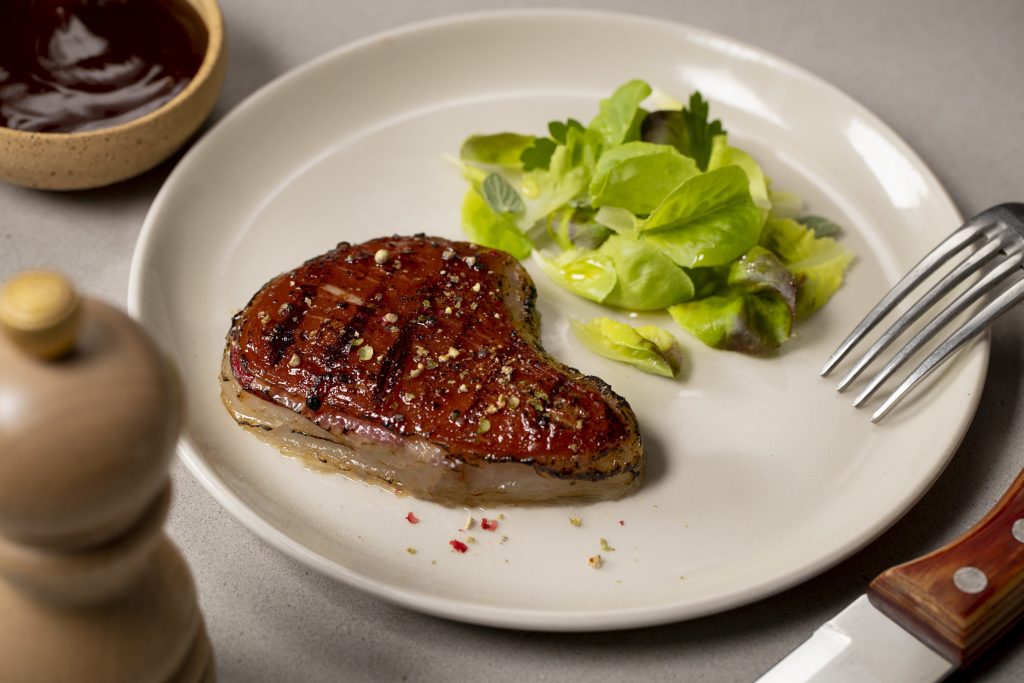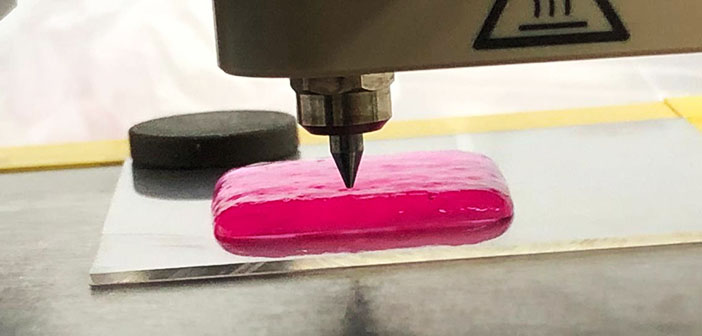MeaTech, an Israeli food technology firm, has announced the latest milestone in its quest to develop sustainable, cultured meat products using 3D bioprinting technology.
Using its own in-house process, the company has successfully 3D bioprinted a 3.67 oz (104 gram) cultivated steak at its lab in Ness Ziona, Israel. The steak is composed entirely of real fat and muscle cells, meaning it doesn’t rely on any meat-free alternatives like soy or pea protein. According to MeaTech, the project was the result of over a year of R&D for the company’s cellular biology, high-throughput tissue engineering, and precision bioprinting processes.
The firm believes its recent work is the largest cultured steak ever produced, serving as a major leap towards the company’s goal of 3D bioprinting cultivated meat products at scale.
Sharon Fima, CEO and CTO of MeaTech, said, “By bioprinting a 3.67 oz steak comprised of living tissue, we believe we have both validated our core technologies and placed ourselves at the forefront of the race to develop high-end, real cell-based cultivated premium meat products.”

MeaTech: disrupting mother nature
MeaTech’s mission is to 3D bioprint lab-based cultured meat that acts as a ‘true replacement’ to conventional steak, emulating the real thing in every way. The company has developed a 3D bioprinter that works with real, living muscle and fat cells, rather than plant-based alternatives. The technology behind the bioprinter was initially successfully tested in November 2020, when the company fabricated an edible cultured beef fat structure for the first time.
As well as eliminating animal slaughter, the approach is expected to offer significant supply chain benefits to producers, reductions in greenhouse gases, and potential health advantages.
February 2021 saw MeaTech acquire Peace of Meat, a Belgian developer of cultured fat products, for a total of $17.7 million split between cash and equity. The company has since utilized Peace of Meat’s avian-focused technologies to expand its current capabilities, which were previously predominantly bovine meat-oriented.
Following the Peace of Meat deal, one of MeaTech’s latest milestones was reported back in September, when it managed to cultivate just over 700 grams of pure chicken fat in what’s believed to be the first biomass 3D printing demo of its kind. Pending approval, MeaTech intends to produce the fat at a pilot plant next year, where it will be marketed as a taste-enhancing ingredient.
The company has also recently begun research into the best way of scaling the 3D bioprinting of pork cells, and if this can be achieved successfully, it believes this could significantly expand its addressable markets.
“We intend to continue leveraging our 3D bioprinting technologies, which we believe to be the optimal technology to create structured meat tissues, such as steaks, under lab conditions,” adds Fima. “We believe that developing additional cultured meat product lines has the potential to generate additional revenue potential.”

The 3.67 oz cultivated steak
To create the steak, MeaTech employed the use of its proprietary tissue engineering process.
The technology works by first isolating bovine stem cells from a tissue sample and multiplying them until they reach a sufficient cellular mass. Once at this mass, the company formulates the stem cells into a bio-ink to be used with MeaTech’s own in-house extrusion-based 3D bioprinter. Using a digital model of a steak structure, the company can then fabricate a steak and place it in an incubator to mature – this is where the stem cells differentiate into the final fat and muscle cells.
MeaTech has stated plans to continue developing its cultivation and bioprinting technologies until it’s able to produce meat that’s virtually indistinguishable from farm-raised steak.
Subscribe to the 3D Printing Industry newsletter for the latest news in additive manufacturing. You can also stay connected by following us on Twitter, liking us on Facebook, and tuning into the 3D Printing Industry YouTube Channel.
Looking for a career in additive manufacturing? Visit 3D Printing Jobs for a selection of roles in the industry.
Featured image shows the 3.67 oz cultivated steak 3D printed by MeaTech. Photo via Shlomi Arbiv.


